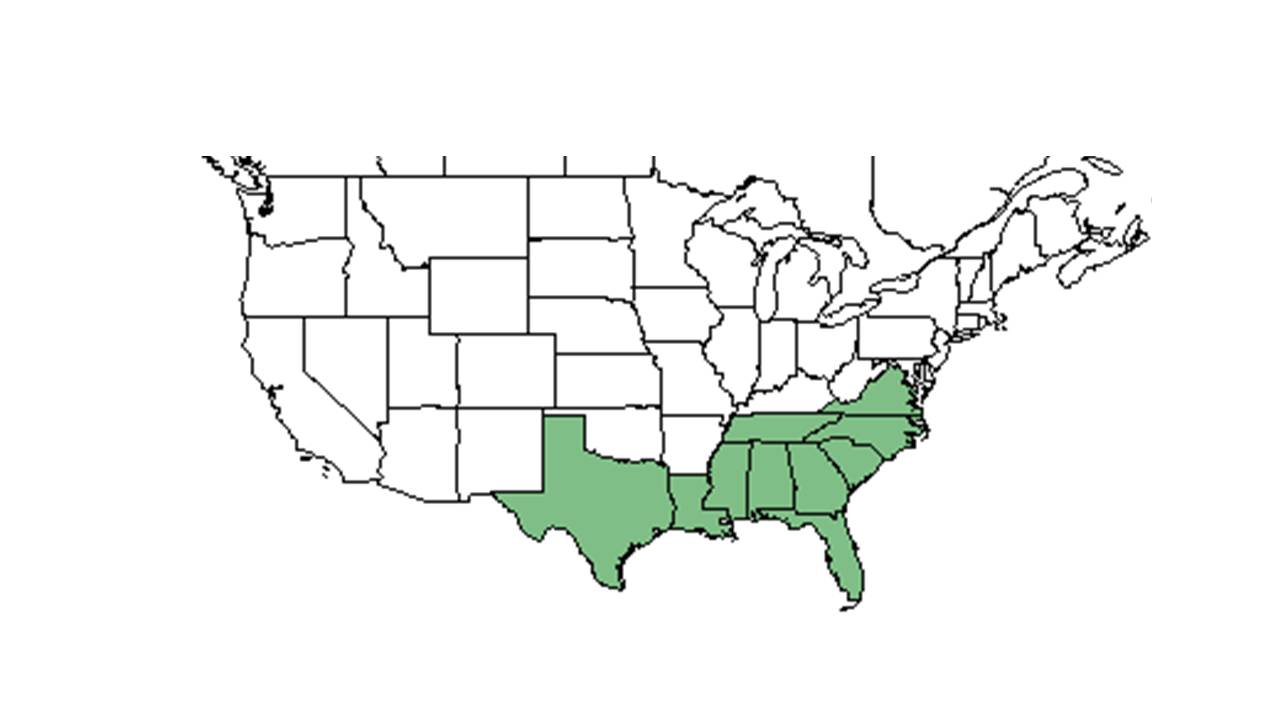Difference between revisions of "Dichanthelium strigosum"
| Line 3: | Line 3: | ||
{{taxobox | {{taxobox | ||
| name = Dichanthelium strigosum | | name = Dichanthelium strigosum | ||
| − | | image = | + | | image = Dich strig.jpg |
| − | | image_caption = | + | | image_caption = Photo taken by Kevin Robertson |
| regnum = Plantae | | regnum = Plantae | ||
| divisio = Magnoliophyta - Flowering plants | | divisio = Magnoliophyta - Flowering plants | ||
Revision as of 14:07, 5 November 2015
| Dichanthelium strigosum | |
|---|---|

| |
| Photo taken by Kevin Robertson | |
| Scientific classification | |
| Kingdom: | Plantae |
| Division: | Magnoliophyta - Flowering plants |
| Class: | Liliopsida – Monocotyledons |
| Order: | Cyperales |
| Family: | Poaceae ⁄ Gramineae |
| Genus: | Dichanthelium |
| Species: | D. strigosum |
| Binomial name | |
| Dichanthelium strigosum (Muhl. ex Elliott) Freckmann | |

| |
| Natural range of Dichanthelium strigosum from USDA NRCS Plants Database. | |
Common name: roughhair rosette grass
Synonym: Panicum strigosum Muhl. ex Elliott
Contents
Taxonomic notes
Description
Dichanthelium strigosum is a perennial graminoid theat tends to grow in thick mats (FSU Herbarium).
Distribution
Ecology
Habitat
It can be found in relatively undisturbed areas,[1] including longleaf pine savannas,[2] saw palmetto-wax myrtle thickets, sandhill ridges, and bogs (FSU Herbarium). However, D. strigosum also occurs in disturbed areas like power line corridors, roadsides, fields, and clear-cuts (FSU Herbarium). This species seems to prefer moist sandy soils (FSU Herbarium).
Associated species include Rhynchospora pusilla, Ludwigia linifolia, Andropogon, Schizachyrium, Eupatorium, Serenoa repens, Juniperus, Schoenus (FSU Herbarium).
Phenology
Flowering and fruiting has been observed in February, as well as April through August (FSU Herbarium).
Seed dispersal
Seed dispersed by gravity.[3]
Seed bank and germination
Fire ecology
It can tolerate biennial, early growing season prescribed fires.[2]
Pollination
Use by animals
Diseases and parasites
Conservation and Management
Cultivation and restoration
Photo Gallery
References and notes
Florida State University Robert K. Godfrey Herbarium database. URL: http://herbarium.bio.fsu.edu. Last accessed: June 2014. Collectors: Cecil R. Slaughter, Loran C. Anderson, S. W. Leonard, A. E. Radford, H. L. Blomquist, D. S. Correll, Wm. G. Atwater, Robert Kral, O. Lakela, R. Komarek, K. E. Blum, R.K. Godfrey, Ed Tyson, A. F. Clewell, Annie Schmidt, Wilson Baker, Richard W. Pohl, Frank W. Gould, and H. Kurz. States and Counties: Alabama: Convington. Florida: Bay, Brevard, Dade, Escambia, Franklin, Hillsborough, Indian River, Jefferson, Lafayette, Lee, Leon, Madison, Nassau, Okaloosa, Polk, Wakulla, and Washington. Georgia : Baker and Thomas. North Carolina: Brunswick. South Carolina: Greenwood and Jasper. Other Countries: Panama (United States of America).
- ↑ Thaxton, J. M. (2003). Effects of fire intensity on groundcover shrubs in a frequently burned longleaf pine savanna. Ann Arbor, MI, Louisiana State University and Agricultural & Mechanical College. Ph.D.: 146. Kirkman, L. K., K. L. Coffey, et al. (2004). "Ground cover recovery patterns and life-history traits: implications for restoration obstacles and opportunities in a species-rich savanna." Journal of Ecology 92(3): 409-421.
- ↑ 2.0 2.1 Thaxton, J. M. (2003). Effects of fire intensity on groundcover shrubs in a frequently burned longleaf pine savanna. Ann Arbor, MI, Louisiana State University and Agricultural & Mechanical College. Ph.D.: 146.
- ↑ Kirkman, L. K., K. L. Coffey, et al. (2004). "Ground cover recovery patterns and life-history traits: implications for restoration obstacles and opportunities in a species-rich savanna." Journal of Ecology 92(3): 409-421.